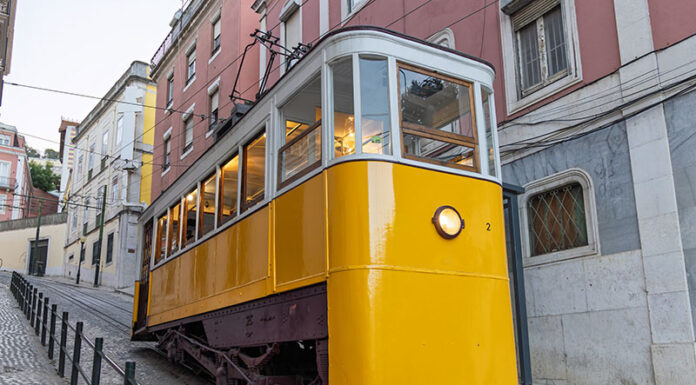A cable car accident in Lisbon, Portugal killed 16 people and injured more than 20 others when the historic Glória funicular derailed and crashed into a building on Wednesday evening, September 3, 2025 (U.S time). The incident occurred at 6:01 p.m. local time during rush hour, marking one of the capital’s worst accidents in recent memory.
Preliminary investigation findings released Saturday by Portugal’s Office for the Prevention and Investigation of Accidents in Civil Aviation and Rail revealed that a steel cable connecting the funicular’s two carriages broke shortly after they began their journeys. The cable “given way” at its attachment point inside the upper car, according to the investigative report.
The two carriages had traveled no more than about 20 feet when they suddenly lost the balancing force provided by the connecting cable. When the cable snapped, the carriage at the top of the hill began speeding downward uncontrollably. The brake operator immediately applied both the pneumatic brake and hand brake to halt the movement, but these actions had no effect in stopping or reducing the cabin’s speed as it continued accelerating down the slope.
The first collision occurred at a speed of around 37 miles per hour, with all events unfolding in less than 50 seconds. In their current configuration, the carriage’s air brake and manual brake do not have sufficient capacity to stop the cabins in motion without their masses being mutually balanced by the connecting cable, investigators found.
Among the 16 victims were five Portuguese nationals, three British citizens, two South Koreans, two Canadians, and individuals from the United States, France, Switzerland, and Ukraine. The American victim has been identified as Professor Heather Hall, who taught at the College of Charleston in South Carolina and was in Portugal for a conference.
Several victims have been publicly identified by their families, employers, and organizations. André Jorge Gonçalves Marques, who worked as the brake guard on the funicular, was among those killed. His employer Carris described him as a dedicated, kind, and happy professional. He left behind a wife and two children.
British victims included theatre director Kayleigh Smith and her partner Will Nelson, as well as David Young, an 82-year-old transport enthusiast from Anglesey, Wales. Young had moved to Holyhead in 1980, where he had a long career as a customs officer before retiring to pursue his passion for visiting heritage railways and tramways around the world.
Two Quebec residents, André Bergeron and Blandine Daux, were visiting Portugal to celebrate Bergeron’s 70th birthday when they were killed. Both worked at Quebec’s Centre of Conservation, where Bergeron had devoted more than 40 years to restoration before retiring in 2022, and Daux had joined the team in 2001.
Four employees of Santa Casa da Misericórdia, Portugal’s largest charity, died in the crash while two others remained hospitalized. The victims included Pedro Manuel Alves Trindade, a former volleyball referee who served as leader of the Lisbon Volleyball Association, along with colleagues Alda Matias, Sandra Coelho, and Ana Paula Lopez.
The cable that failed had been installed 337 days prior to the incident and had a defined useful life of 600 days. A scheduled inspection conducted on the morning of September 4 detected no anomalies in the vehicles’ cable or braking systems, though investigators noted it was not possible to see the condition of the section where the cable eventually broke.
Emergency services arrived at the scene within three minutes of being alerted and pulled all victims from the wreckage within just over two hours. At least 21 people were injured, including German, Spanish, Korean, Cape Verdean, Russian, Canadian, Italian, and Swiss nationals. Three German citizens were among the injured, including a three-year-old child.
The 140-year-old Elevador da Glória funicular, classified as a national monument, connected Restauradores Square to the Jardim de São Pedro de Alcântara garden in the Bairro Alto neighborhood. Inaugurated in 1885, the service operated on a curved, traffic-free road and was popular with both tourists and locals who used it instead of walking up the steep hill.
Portugal declared a national day of mourning following the disaster, with President Marcelo Rebelo de Sousa canceling a planned trip to a book festival. Lisbon’s city council halted operations of three other funicular streetcars while immediate inspections were carried out. The city and its three million residents observed three days of mourning.
Carris, the company operating the streetcar, stated that all maintenance protocols were carried out and the last repairs were completed in the previous year. However, transport union officials indicated that workers had made repeated complaints about maintenance needs for the funicular carriages and concerns about outsourcing maintenance to external companies rather than having Carris workers handle it directly.
A full preliminary report is expected within 45 days, followed by a final report within one year. Homicide investigators are among those probing the crash, while teams of pathologists from multiple Portuguese cities worked through the night conducting autopsies.








